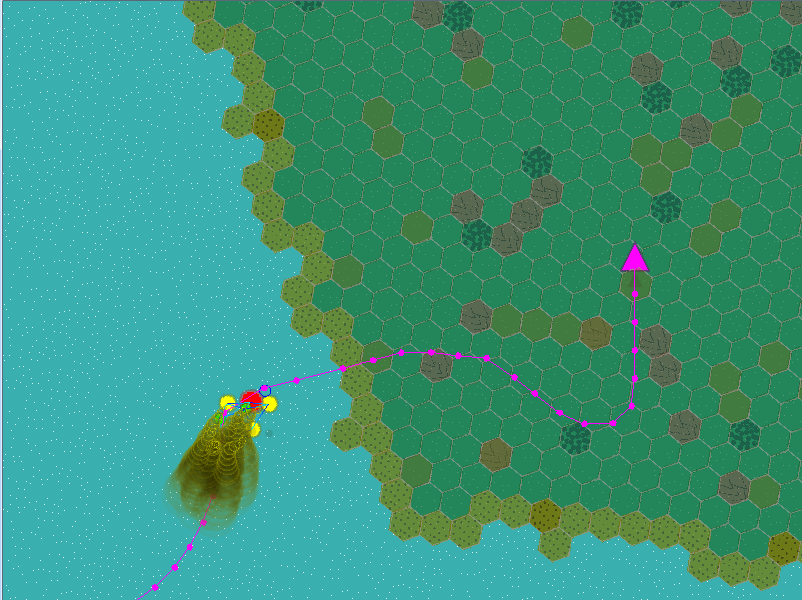
This coming episode, we’ll need to start working to make the islands we drop on the map more natural, which is going to require some hex rules.
Currently we have a map composed of the following hex tiles: none = ocean, landing strip (start, middle, end), ground, forest, mountain, light (where light can overlap other tiles). The player can fly over any of the tiles, but can only walk over landing strip or ground tiles. Forest and mountain tiles serve as both obstacles and enemy spawning points.
Determining the Hex Rules
First, it might be worth paring down the landing strip tile to make it one tile used for both landing and take off. This should be possible by making one edge the landing trigger and the other edge the takeoff trigger. Also, to give the player more options, it might be worth changing the concept of this tile from a “landing strip” to something like a beach – something that occurs in nature, at the edge of islands, and doesn’t require nearly as much explanation to new players. It could make it easier to handle pathfinding too, as leaving a fringe of beach around the island ensures access to the island without worrying about where a landing strip is in relation to goals. It will also give players a chance to check around the perimeter of the island.
So, this should give us our first rule:
1) The edge of an island is always a beach tile.
And, to give players breathing room for moving we should add:
2) The next tile from a beach tile is a ground tile.
Now we can start considering the obstruction tiles. Forests and mountains shouldn’t be interchangeable, there should be some rhyme or reason to their formation. As these are islands, it makes more sense for mountains to be towards the middle – where the original island likely rose out of the sea, while forests should be elsewhere. We also need to clump these obstacles together so they provide a genuine obstacle and don’t just create an annoyance for the player trying to move around.
3) Mountains have a high probability of being near the middle
4) Mountains have a high probability of being near other mountains
5) Forests have a high probability of being away from the middle
6) Forests have a high probability of being near other forests
That’s a pretty good foundation to start with for making natural islands. The only thing left will be a few extra rules for covering sun tiles and special items/locations.
For the sun tiles, they can be over any other kind of tile and provide the player with a boost of energy as well as a bit of safety, because enemies get destroyed when they try to enter the light. But we don’t want sun tiles to be random, we want them to have some meaning. To create pockets of light, like obstacles, the odds of a sun tile should go up when there’s a neighboring sun tile.
7) Sun tiles have a high probability of being near other sun tiles
And for special items, like artifacts, and special locations, like the checkpoint monoliths, they should tend to be far from the beach, but still accessible to the player.
8) Special items/locations have a high probability of being in the middle of an island
9) Special items/locations only spawn on ground tiles
10) At most, only one special item or location should exist per island.
Now we’ve got a nice base for the basic rules, though in the future, we’ll need to add a few extra steps to make sure there is always a path from the beach to special items or places.
We’ll do our best to get these hex rules implemented next episode! If you have any ideas of your own, feel free to let us know during the show.